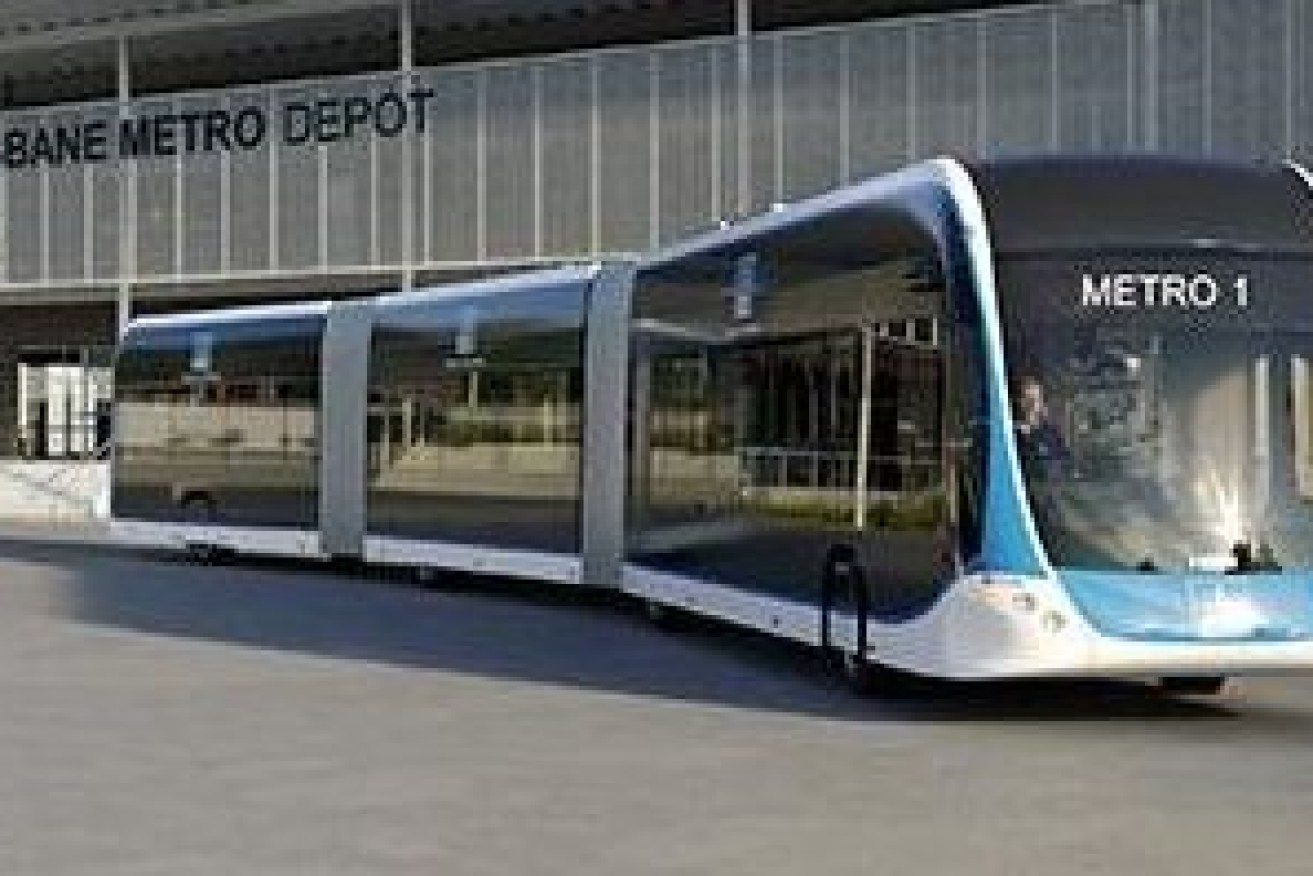On the right track: Expert says Brisbane Metro technology the answer to traffic woes
Australian cities are being urged to consider adopting “trackless tram” technology to cut emissions, reduce traffic and help household budgets.

An artist's impression of the Brisbane Metro project.
Prominent urban planner Mike Day issued the recommendation after Perth became one of the first cities to trial the low-emission technology that required as little as “one fifth” the investment of a traditional tram.
But while the technology is being considered in other locations, and for use during the 2032 Brisbane Olympic Games, some transport authorities have questioned its record.
Trackless trams, which are also known as “mid-tier transit vehicles” and “autonomous rapid transit”, are long vehicles that use rubber tyres rather than rails and are guided by magnetic nails and sensors embedded in roads.
The trams can be powered by electricity or hydrogen fuel cell technology to significantly reduce emissions compared to diesel public transport vehicles, and can carry up to 300 passengers.
The technology is being used in several Chinese cities, including Shanghai, though trials in France and the US have ended.
Mr Day said the technology would be suited to congested outer metropolitan suburbs, like those in Sydney and Melbourne, and could appeal to state governments as the technology would cost “a quarter or a fifth” as much as installing light rail transport.
“The greatest attribute of these trackless trams is there’s no need to lay tracks and multi-millions of dollars aren’t spent ripping up roads and putting in steel tracks,” the Hatch consulting partner said.
“This new technology has significant cost savings over steel-on-steel.”
The Perth city of Stirling trialled a trackless tram late last year as part of a $2 million federal government project.
The technology will also be used in Brisbane, with the rollout of 60 trams expected as part of the city’s Metro project, and has been considered for the Sunshine Coast in Queensland and in the Victorian city of Geelong.
Mr Day said cities adopting the technology would need to explain its benefits over traditional buses, but it had the potential to not only reduce transport emissions but help families reduce their spending and reliance on cars.
“In the absence of transit, people feel compelled to buy two cars,” he said.
“It’s becoming a myth that there’s affordable housing out in the suburbs because the cost of transport is exceeding the cost of houses.”
Trackless trams can be controversial, with an Australasian Railway Association report in 2021 calling the technology “unproven” in some environmental conditions and warning they could require new road requirements due to their length and weight.












